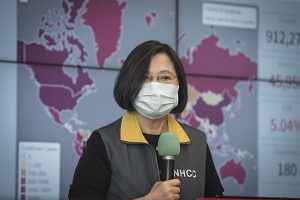Updated 03-Aug-2025
See all Covid-19 articles:
- Covid-19 Updates
- Covid-19 Vaccines
- Facemasks and Covid-19
- Herd Immunity and Covid-19
- Why People won't get Vaccinated
Facemasks in the United States

During the ongoing Covid-19 pandemic, the WHO and CDC initially performed a disservice by downplaying the advantages of facemasks. This was due to the critical shortage of these and the need for health and medical personnel to have access to them. In particular, the CDC underscored that surgical masks or N-95 respirators be reserved for healthcare professionals and first responders.
Later, recommendations and instructions were provided to use face coverings in public settings, and instructions on how to make them.
It was only much later that certain states started mandating the use of facemasks in public (such as New York).
Unfortunately this messaging of the importance to wear facemasks or face coverings was not clearly stated, and not regularly stated for several months. Now people complain about having these new requirements "sprung" on them. In addition, the patchwork nature of the fifty states and a severe lack of coordination between them (massive failure of the federal goverment to effectively advise and support the states) has meant a lack of best practices and a mishmash of messaging. The president is the worst offender.
Facemasks in Singapore
Singapore had a similar problem in that they downplayed the need to wear facemasks in public, which resulted in a ballooning crisis over time. In particular, the immigrant working community has been largely ignored, even though they live in very close conditions where Covid-19 infections are highly likely without new public health measures such as wearing masks, washing or sanitizing hands, and the like. The government was too focused on appearing normal (with the exception of shutting down flights), to institute adequate healthcare policy changes to arrest viral infections.
Facemasks in Thailand
In Thailand, facemasks have been much more prevalent in general, and used when people are sick, and also during the months of very bad air pollution (predominantly February-May).
The availability of the masks, which are of various designs and quality, declined precipitously in late March, but previous to that they were generally available in all pharmacies and convenience stores.
Beginning in early April, many stores began to require the wearing of facemasks. Even without requirements, well over 90% of people began to wear facemasks in nearly all public settings.
Do Facemasks work?
Yes, of course facemasks work. They are meant to protect sick people from infecting others (and since Covid-19 is infectious in people who have no or mild symptoms, it is hard to know when one is sick). They are also meant to prevent healthy people from getting sick. If facemasks did not work, then they would not be deemed critical supplies for healthcare workers, obviously.
In addition, in studies N95 and surgical masks have been found to be equivalently effective at protecting against viruses. Since they filter at different levels, the mechanism for effectiveness is hypothesized as mainly preventing one from touching one's face, which limits the hand-to-face contact, and hence the spread of viruses.
There are a few issues with facemasks to guarantee effectiveness (which does not reach 100% in any case, but does have a measurable effect).
- Facemasks must be worn correctly -- they should cover the mouth and nose completely.
- Facemasks with valves do not protect others from the wearer, as water vapor can escape through the valves.
- Facemasks with higher N values are better at protection (e.g., N95, N99), than standard surgical masks and homemade (cloth) masks.
- Viruses are quite small and so some masks provide little or no protection, such as the Japanese Pitta mask, do not filter out viruses at all, though many people wear them in addition to a surgical-style mask.
- Homemade masks, made out of bandanas or tshirts can be effective, but not as effective as the N95/N99 rated masks.
- 2 meter / 6 feet distance between people is still very much encouraged
What about the Flu?
Some folks ask the good question why don't we wear facemasks when there is the flu (since flu and covid-19 transmit the same way), and why wear facemasks at all, if Covid-19 is just like the flu?
Covid-19 is not like the flu. Depending on when you look at the case fatality numbers, Covid-19 (first wave) had a case fatality of 3.1% in the United States, whereas the flue has about a 0.1% case fatality. Even as case fatality numbers go down (around 2-2.5%, and as low as 1% in some countries who did not experience a devastating wave of infections), it is clear that Covid is at least 10 times more deadly, and most likely 20 times more deadly. This does not account for the fact that some Covid infections are coming after vaccination (as do some flu infections), which lowers the mortality rate, as well as the increasingly prevalent Delta variant (as of July, 2021).
Currently the world has a 2.15% case fatality, the US has a 1.79% case fatality, and the UK has a 2.43% case fatality. The bottom line is that Covid-19 is approximately 20 times more deadly than the flu.
Facemask resources
- Microwaving facemasks (or just drying them) kills viruses and does not degrade performance
- UV light disinfects facemasks (but it also degrades rubber straps)
- Can DIY facemasks catch viruses?
- Best materials for making a DIY facemask